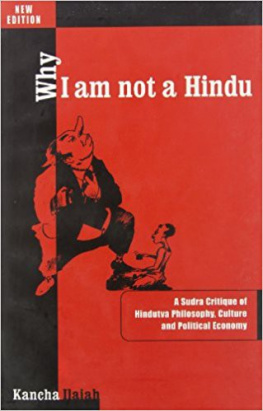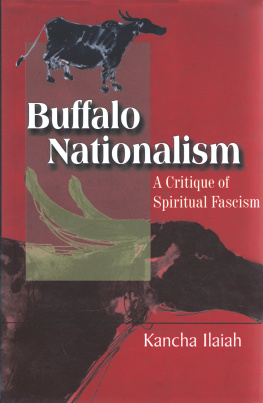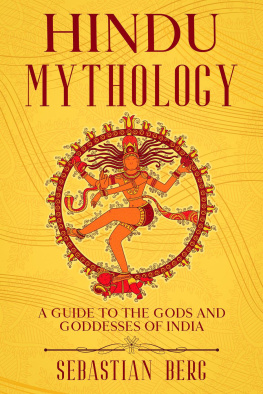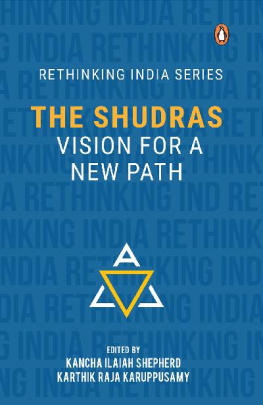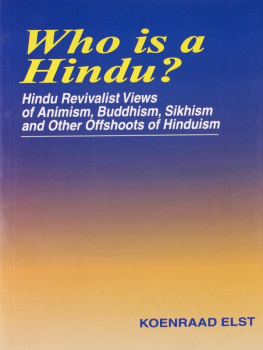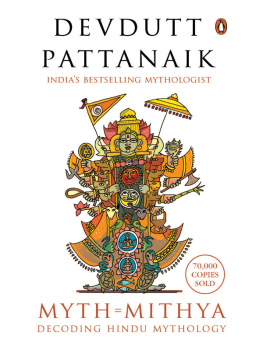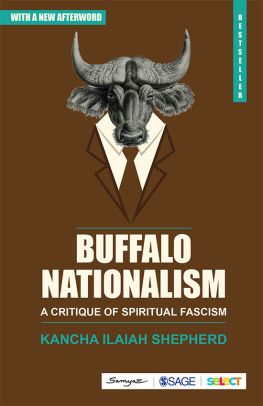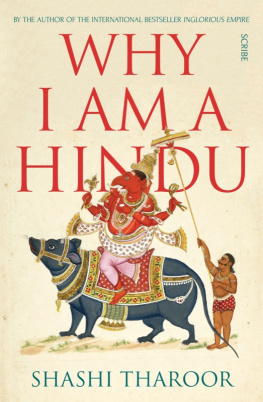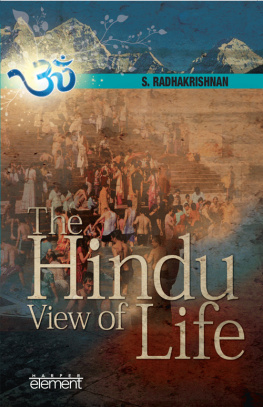
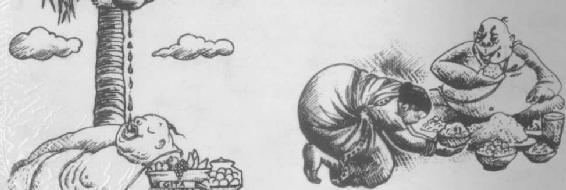

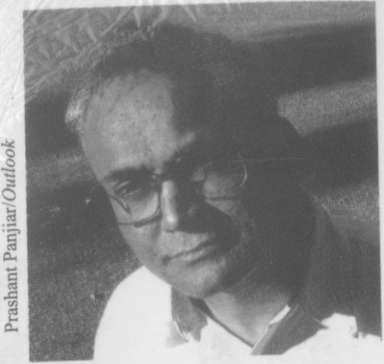
Why I Am Not a Hindu
A
Also by the author
God as Political Philosopher Buddha's Challenge to Brahminism
Why I Am Not a Hindu
A Sudra Critique of HindutvaPhilosophy, Culture andPolitical Economy
A
KANCHA ILAIAH

WHY I AM NOT A HINDU
A Sudra Critique of Hindutva Philosophy, Culture and Political Economy
was first published by SAMYA, 16 Southern Avenue, Calcutta 700 026 in Feb. 1996
First reprint Dec. 1996
Second reprint Sept. 1997
Third reprint Oct. 1998
Fourth reprint June 2000
Fifth reprint Feb. 2001
Sixth.reprint Feb. 2002
2002 Kancha llaiah
ISBN 81-85604-18-5
All Rights Reserved.
No part of this book may be reproduced or utilized in any form or by any means without prior permission from the publisher.
Distributed by Popular Prakashan Pvt. Ltd.
Mumbai, Calcutta, Delhi, Pune.
Typeset and design by Compuset International, 85 Park Street, Kolkata 700 016, and printed by Tarun Enterprises, Delhi.
Published by Mandira Sen for Samya, an imprint of Bhatkal and Sen, 16 Southern Avenue, Calcutta 700 026
To my mother, Kancha Kattamma, whom we lost in 1967
Preface
This book is an outcome of my constant interaction with the Dalitbahujans in the Dalit and civil rights movements, who kept telling me, in a variety of ways, about their culture, economy and politics. What I have done is to put their ideas down in a systematic way. Apart from my personal experiences all the ideas in this book are picked up from illiterate and semi-literate Dalitbahujans and also from a few formally educated Dalitbahujan organic intellectuals.
On several occasions my upper caste friendswomen and menhave discussed the socioeconomic life processes in their castes and families with me. Such discussions were of immense use in building a critique of their culture and economy from the point of view of Dalitbahujan culture and political economy. I thank all those friends. After I had completed the draft Susie Tharu, Duggirala Vasanta and Manohar Reddy involved themselves fully with it, shaping the book into its final form. In fact they spent so much time on it that it virtually became their adopted child.
All the members of Satyashodhak contributed by participating in our regular ' adda debates' (the place where villagers gather together to discuss village problems is known as adda), sharing my ideas and also criticizing them. Special mention must be made of Dr S. Simhadiri and A. Ramanatham whose critique enriched some chapters. Rama Melkote, Veena Shatruguna, K. Lalita and Paroma Deb of Anveshi read some chapters and made useful suggestions. The suggestions that Lalita offered were of great use in the analysis of Brahmin life-processes, as they have been presented in this book.
My niece Rama and nephew Krishna Kanth typed the first draft and G. Ramalingam of Osmania University keyed it on the computer. R. Srivatsan came to our aid whenever computer technology created knots. In the process Srivatsan, who is a scholar himself, read the manuscript, gave me much-needed encouragement, and offered his valuable comments. My sister-in-law, K. Bharati, brother Kattiah and two younger nephews K. Naresh and M. Surender helped in several ways while I was writing this book. I thank all of them.
A NOTE ABOUT TERMS AND CONCEPTS
I would like to say a word about the terms and concepts that I use in this book. I have not used terms like 'lower castes' or 'Harijans' while referring to the Other Backward Classes (OBCs) and Scheduled Castes (SCs) because the very usage of such terms subordinates the productive castes. Dalitbahujan history has evolved several concepts and terms to refer to the castes that constitute SCs and OBCs.
Mahatma Jyotirao Phule, who perhaps was the first modern thinker to write about all productive castes, had characterized them as 'Sudras and Ati-Sudras'. There are problems in using the same concepts now. At that time there was no clear division between 'Sudra upper castes' (whom I characterize as Neo-Kshatriyas in this book) and the OBCs in general. All those castes that did not fall under the category of Brahmin, Kshatriya, Vaisyas were called 'Sudras' and all the so-called untouchables were called 'Ati-Sudras'. This kind of conceptualization has its own problems. The concept 'Sudra' has been used by brahminical writers in a derogatory sense. It does not communicate a feeling of self-respect and political assertion. Phule's usage, however, is to be preferred to the abusive brahminical terms like Chandala, mleccha, raaksha, and so on; even an anglicized term like 'untouchable' is equally unacceptable.
Many sociologists used the term 'caste Hindus' to refer to all castes which are outside the Scheduled Castes. This terminology is a trap for the OBCs. In their day-to-day lives the OBCs are as oppressed as are the Scheduled Castes by the 'upper' castes. Yet the term offers the OBCs inclusion in the 'Hindu' foldbut only as unequals. I, therefore, reject this terminology outright.
When Ambedkar began to write about these castes, the British Government of India was using the term 'Depressed Castes' to denote all working castes. For a long time, Ambedkar used the same concept to denote all productive castes. After the colonial government set up a schedule in which reservations were to be provided for the 'untouchable' castes, Ambedkar used the term 'Scheduled Castes'of course, to refer only to the so-called untouchable castes. However, he never developed a similar secular term that could refer to the OBC castes collectively.
Ambedkar gradually shifted to using 'Dalit', a concept that is rooted in the Marathi language, to refer to Scheduled Castes. The word 'Dalit' means 'suppressed and exploited people'. The concept seems to have emerged from the people's usage in Maharashtra. The term 'Dalit' became really popular only after the emergence of the 'Dalit Panthers' movement in Maharashtra in the 1970s. 'Dalit' as it is usually understood encompasses only the so-called untouchable castes. Though recently some organizations like the Dalit Maha Sabha of Andhra Pradesh did attempt to use the word 'Dalit' to denote SCs, STs (Scheduled Tribes) and OBCs, the popular press and the masses themselves never took up the usage.
Meanwhile from 1984 onwards the concept of 'Bahujan' began to become popular with the emergence of the Bahujan Samaj party (BSP). Kanshi Ram, the national president of the BSP, began to use the term 'Bahujans', to refer to SCs, STs and OBCs. He also expressed the view that one should not use the term 'Dalit' as it separates SCs from STs and OBCs. The concept 'Bahujan' simply means 'majority'. It is in this sense that the term was first used by Buddha and then by Phule. The problem is that it does not point to what the nature of that majority population is. To resolve the problem, I have decided to use the term 'Dalitbahujans' to refer to SCs and OBCs. One may also, as Kanshi Ram does, include the STs in it. But I have not discussed STs in this book as strictly speaking they do not figure in the caste system.
Next page
